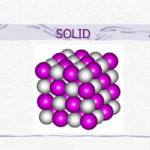The Strongest Technologies for Verifying Message Sender Identity in Secure Communications

Introduction: The Challenge of Authentic Sender Verification
In our digital world, ensuring that a message truly comes from the intended sender is a fundamental requirement for secure communication. This assurance-known as authentication -is vital for everything from confidential business data to personal messaging. The question “what is the strongest technology that would assure Alice that Bob is the sender of a message” addresses the highest available standard for sender verification. This article will explore current and emerging technologies, their real-world applications, and practical guidance for organizations and individuals seeking the most robust solutions.
Understanding Authentication: Why It Matters
Authentication is the process of verifying the identity of a party in a communication. For Alice to be sure that Bob is the real sender, the system must prevent both accidental and malicious impersonation. Weak authentication can lead to
man-in-the-middle attacks
, data breaches, and loss of confidentiality. As threats evolve, so do the technologies to counter them. Today, both classical and quantum-resistant methods are under active development and deployment.
Quantum Key Distribution: The Gold Standard for Secure Sender Authentication
Quantum Key Distribution (QKD) represents the most advanced technology in cryptographic authentication. QKD leverages fundamental principles of quantum mechanics to enable two parties (Alice and Bob) to generate a shared secret key that is provably secure. Any attempt by a third party to intercept the key introduces detectable anomalies, allowing the legitimate parties to abort the communication if a breach is detected [2] .
However, QKD alone does not transmit messages or automatically verify sender identity. It provides the infrastructure for secure key exchange, which must be combined with strong authentication protocols to ensure Alice knows she’s communicating with Bob [1] . In practical QKD systems, the authentication process is usually performed using either pre-shared symmetric keys or advanced digital signature schemes [3] .
How QKD-Based Authentication Works in Practice
1. Pre-Shared Secrets: Alice and Bob share a secret key in advance, which is used to authenticate messages sent over the classical channel. This method is extremely secure but requires a trusted way to initially share the secret [5] .
2. Post-Quantum Signatures: For scalability and to avoid manual key distribution, QKD systems can use digital signature schemes that are resistant to quantum attacks (such as lattice-based cryptography). These signatures allow Alice to verify Bob’s identity using public keys distributed through a secure infrastructure [3] .
3. Mutual Entity Authentication: Modern QKD protocols implement mutual authentication, where both parties verify each other using quantum and classical channels, further reducing the risk of impersonation [1] .
These methods, when properly implemented, provide the highest assurance currently available that the sender is who they claim to be.
Real-World Example
Major technology companies and government agencies are already piloting QKD networks for national infrastructure and financial transactions. For instance, deployed fiber networks in Europe and Asia incorporate QKD for both key exchange and mutual entity authentication, ensuring end-to-end message integrity in high-stakes environments [1] . These systems typically require significant investment and are most justified where the highest security is essential.
Step-by-Step Guidance: Implementing Strong Sender Authentication
If you wish to implement the strongest available authentication for secure messaging, consider the following steps:
1. Assess your Security Requirements: Determine the sensitivity of your communications. QKD is most appropriate for organizations where compromise would have severe consequences.
2. Evaluate Available Technologies: – For the highest assurance, seek commercial QKD solutions that offer integrated authentication. Many leading technology vendors provide demonstrations and pilot projects for enterprise clients. – If QKD is not feasible, use post-quantum secure digital signature systems, such as lattice-based schemes, which are being standardized by organizations like NIST.
3. Establish Pre-Shared Keys (When Possible): If you control both endpoints, securely distribute a symmetric key in person or via a trusted courier. Use this for message authentication codes (MACs) or HMACs to validate sender identity.
4. Use Public Key Infrastructure (PKI) with Post-Quantum Algorithms: For scalable deployments, set up a PKI using post-quantum digital signatures. Distribute certificates through established channels and ensure regular updates in line with emerging best practices.
5. Maintain and Monitor Authentication Protocols: Regularly review your authentication mechanisms for vulnerabilities. Update keys and cryptographic algorithms as new threats emerge.
Potential Challenges and Solutions
While QKD and post-quantum authentication offer unprecedented security, they present practical challenges:
Cost and Complexity: QKD hardware and infrastructure are expensive and not yet widely available outside specialized sectors. For most users, strong software-based post-quantum authentication is a more accessible alternative [5] .

Source: pkbnews.in
Key Management: Safeguarding pre-shared keys or private keys remains a critical challenge. Use hardware security modules (HSMs) and regular audits to mitigate insider risks and accidental exposure.

Source: hettyqvallie.pages.dev
Technology Maturity: QKD is still evolving, and many commercial solutions are in pilot stages. Post-quantum signature schemes are also under active evaluation and standardization.
To address these barriers, consider hybrid approaches that combine multiple authentication methods, gradually increasing security as new technologies mature.
Alternative Approaches for Sender Authentication
While QKD and post-quantum authentication represent the strongest solutions, other well-established methods include:
Traditional Public Key Infrastructure (PKI): Widely deployed for email, web, and enterprise communications. However, traditional algorithms like RSA and ECC may become vulnerable to quantum attacks in the future.
Multi-Factor Authentication (MFA): Adding out-of-band verification (such as SMS, biometrics, or hardware tokens) can strengthen confidence in sender identity when cryptographic solutions are not available.
End-to-End Encryption with Mutual Authentication: Secure messaging platforms like Signal and WhatsApp use end-to-end encryption with built-in mutual authentication, effective for personal and business messaging but relying on classical cryptography [4] .
Accessing and Implementing Secure Authentication Solutions
If you are seeking to deploy the strongest authentication technology:
- For QKD solutions, contact leading cybersecurity vendors or research consortia specializing in quantum-safe communications. You may find pilot programs through national laboratories or large telecom providers.
- For post-quantum digital signatures, monitor the progress of the NIST Post-Quantum Cryptography Standardization Project by searching for “NIST PQC” on the official National Institute of Standards and Technology website.
- For securing small-scale communications, consider using end-to-end encrypted apps with strong authentication, and research enterprise-grade offerings that incorporate HSMs and secure key management.
Since the availability of QKD and post-quantum cryptography solutions is still developing, you may need to engage with specialized consultants or participate in early-access programs for cutting-edge deployments.
Key Takeaways
Quantum Key Distribution integrated with strong authentication protocols offers the highest assurance currently available that the sender of a message is truly who they claim to be. For most users, robust post-quantum digital signatures and careful key management provide strong, scalable alternatives. As quantum technology matures, organizations should remain updated on standards and best practices to maintain the highest levels of security.
References
- [1] H Park et al. (2023). Mutual entity authentication of quantum key distribution network systems.
- [2] Wikipedia (2024). Quantum key distribution.
- [3] LJ Wang et al. (2021). Experimental authentication of quantum key distribution.
- [4] Amazon Science (2025). QKD and authentication: Separating facts from myths.
- [5] Dutch General Intelligence and Security Service (2024). Position Paper on Quantum Key Distribution.






